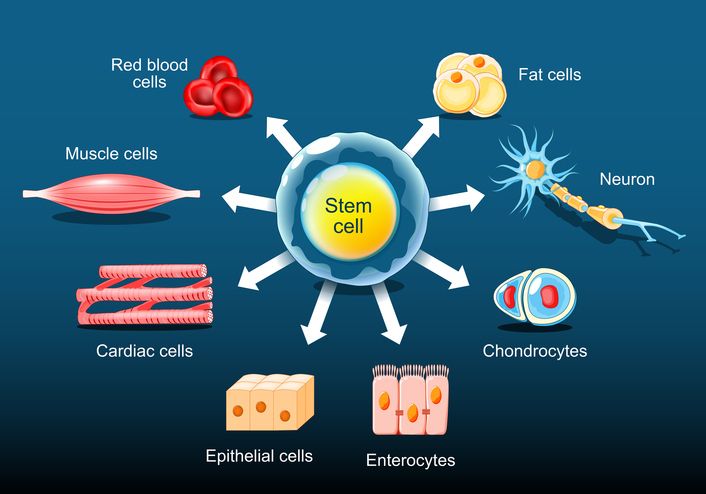
Author: Natalie Ng|Updated: 13 May 2025
Following a gluten free diet is important for anyone with celiac disease, gluten intolerance, or non celiac gluten sensitivity, but it doesn’t always lead to healthier or lighter meals. Many gluten free foods still rely on starches, sugar, and processed ingredients that can slow down weight loss. Replacing wheat flour with potato flour or choosing rice-based pasta might avoid gluten, but it doesn’t always help your goals. With a few simple swaps, you can make your meals more balanced without giving up on taste or convenience. Focusing on naturally gluten free foods like fresh fruits, vegetables, and certified gluten free grains adds more fiber and nutrients while cutting down on processed foods. Keep reading for 10 easy changes that make a gluten free diet work better for weight loss.

Swap Gluten Free Bread for Portobello Mushrooms

A lighter option for certain meals
Gluten free bread is convenient but often made with starchy flours like potato flour or rice flour. These breads are usually highly processed, lower in fiber, and can spike blood sugar quickly. For meals that don’t need a full sandwich structure, portobello mushrooms make a simple swap that cuts back on calories and processed ingredients.
Large mushroom caps can work well as burger buns or a base for open-faced toppings. They’re naturally gluten free, low in carbs, and offer a meaty texture that holds up well with fillings.
Keep balance in mind
While mushrooms are a good swap in specific meals, they don’t replace gluten free flours or naturally gluten free grains that offer fiber, B vitamins, and energy. People with celiac disease or gluten intolerance still need to include nutritious foods like certified gluten free bread made with gluten free seed flours or whole grains like wild rice and brown rice.
Mixing in mushrooms occasionally helps reduce processed foods without cutting out key nutrients. It’s about finding a mix that supports your gluten free diet and weight loss goals while keeping meals satisfying.

Swap Rice Pasta for Zucchini Noodles

Lower starch without losing volume
Rice pasta is one of the most common gluten free options found in stores, but it’s still made from refined gluten free grains that are high in starch. These products, while labeled gluten free, can still contribute to weight gain if eaten in large portions. For those managing celiac disease or gluten intolerance, replacing rice pasta with naturally gluten free vegetables like zucchini is a simple way to reduce processed foods and add more nutrients to your meals.
Zucchini noodles—or zoodles—are made from fresh zucchini, which is naturally gluten free and free from gluten containing grains like wheat, barley, or rye. You won’t need to worry about hidden gluten, flavor enhancers, or modified food starch. Plus, zoodles pair well with most gluten free sauces and proteins like ground turkey or grilled chicken.
Nutritional benefits of zucchini
Zucchini contains vitamin C, potassium, and fiber. Its high water content helps keep digestion smooth, which is especially important for people with a sensitive digestive system or those experiencing symptoms like bloating or stomach pain from eating gluten. Unlike rice pasta, zucchini noodles don’t cause blood sugar spikes, making them a better choice for people watching their weight on a gluten free diet.
For extra variety, you can also try spaghetti squash or shirataki noodles—both of which are naturally gluten free and lower in calories. These gluten free foods are ideal for those aiming to eat fewer carbs without sacrificing meal satisfaction.
Book Now to Experience
S6 Body Sculpting Treatment
1 Minute Self-Registration
Date should not be before minimal date

Swap White Rice for Quinoa
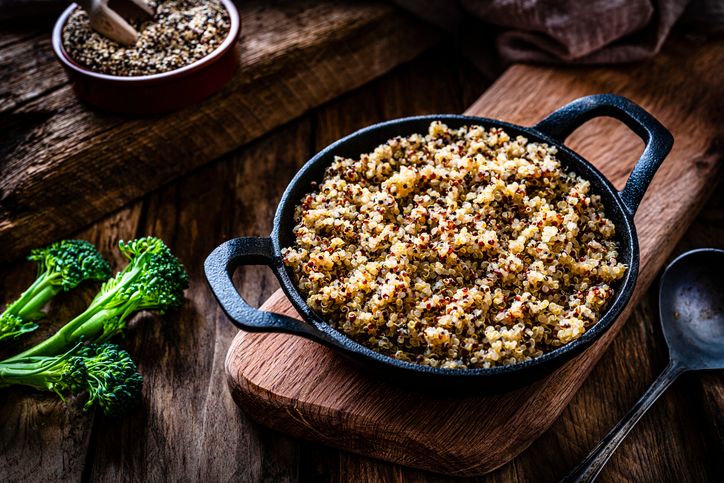
More protein, better balance
While white rice is a naturally gluten free grain, it offers limited nutritional value. It’s low in fiber and protein, and when eaten alone, it can cause blood sugar levels to rise quickly. For people with celiac disease, non celiac gluten sensitivity, or gluten intolerance, relying on more nutrient-dense gluten free foods helps support long-term health and better weight control.
Quinoa is a naturally gluten free seed that works like a grain but delivers more protein and fiber per serving. It’s also rich in iron, magnesium, and B vitamins—nutrients often lacking in processed gluten free products. Unlike many gluten free options that rely on starchy fillers or potato flour, quinoa supports a more complete and satisfying meal.
Managing energy and digestion
The higher fiber in quinoa helps slow digestion, which supports blood sugar control and steady energy. It also supports the digestive system, which can be more sensitive in people avoiding gluten. Replacing white rice with quinoa can also help reduce dependence on processed gluten free grains that offer little more than empty calories.
This swap is useful for those reading food labels carefully to avoid added gluten containing ingredients like wheat starch or barley malt, which may appear in processed rice blends or seasoned rice packets. Choose certified gluten free quinoa when possible to avoid cross contaminated products.

Swap Gluten Free Crackers for Vegetable Chips
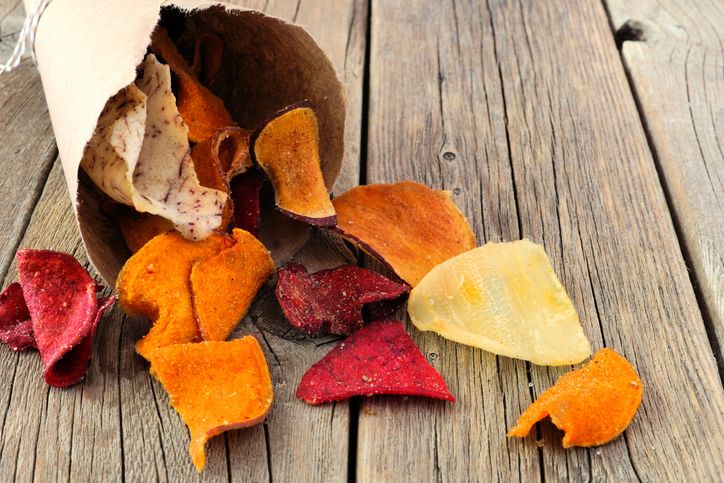
Fewer processed ingredients, more nutrients
Gluten free crackers are often marketed as healthy, but many contain refined starches, added sugars, and gluten free flours with little nutritional value. While they don’t contain wheat gluten, they’re still processed foods that can include hidden gluten through cross contamination or additives like malt flavoring or modified food starch.
Replacing them with homemade vegetable chips using naturally gluten free vegetables like sweet potatoes, beets, or kale helps reduce your intake of processed snacks. These vegetables are free from gluten containing ingredients, and when baked at home, they don’t include preservatives or flavor enhancers.
Smarter snacking for people with gluten intolerance
For those with celiac disease or gluten sensitivity, reading labels for gluten free certification is essential—but even certified gluten free snacks can still be heavy in starch and low in nutrients. Homemade vegetable chips allow you to skip the guesswork and eat foods that support your dietary needs.
Root vegetables and leafy greens also offer health benefits beyond their gluten free status. Sweet potatoes are high in vitamin A and fiber, kale is packed with vitamins C and K, and beets provide antioxidants and essential minerals. These naturally gluten free foods make a smarter choice for anyone avoiding gluten, especially when trying to support weight loss.
Book Now to Experience
S6 Body Sculpting Treatment
1 Minute Self-Registration
Date should not be before minimal date

Swap Gluten Free Tortillas for Lettuce Wraps
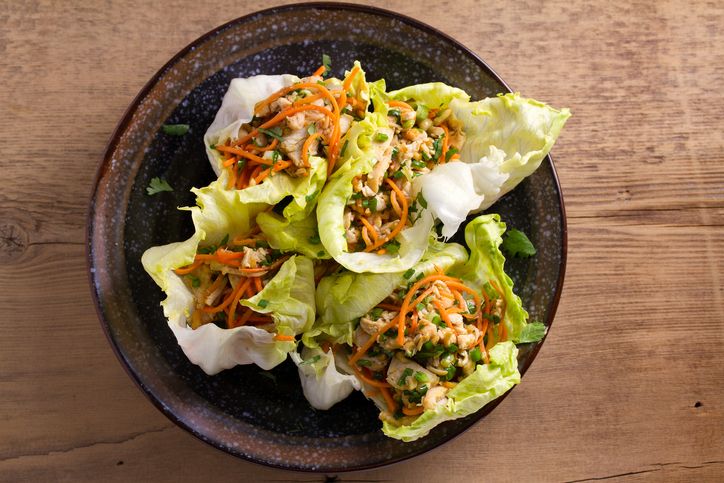
Less starch, more freshness
Gluten free tortillas may seem like a better alternative to wheat-based wraps, but they’re often made with high-starch gluten free flours like tapioca, potato flour, or rice flour. While they don’t contain gluten, they still fall under processed foods and may include gums, preservatives, or hidden gluten from cross contaminated ingredients. Replacing them with large leafy greens gives you a fresh, naturally gluten free option that’s lighter and easier on digestion.
Lettuce wraps are free from gluten containing grains and help reduce your intake of packaged gluten free products. Using vegetables like iceberg, romaine, cabbage, or collard greens also adds fiber, hydration, and vitamins without relying on gluten free versions of traditional bread products.
Better structure with the right greens
Not all greens work the same way. Cabbage and collard leaves hold up best with hot fillings like ground turkey or grilled vegetables. Romaine works well with tacos or cold fillings like fresh fish, avocado, or frozen fruits. These greens are typically gluten free and free from added gluten containing ingredients often used in processed wraps.
This swap is especially helpful for people with gluten intolerance or wheat allergy who want to reduce processed gluten free options while eating more naturally gluten free foods like fruits and vegetables.

Swap Gluten Free Cereal for Chia Seed Pudding

Less sugar, more nutrition
Many gluten free cereals may be labeled gluten free, but they often contain added sugars, flavor enhancers, and gluten free grains that are heavily processed. Some also include questionable ingredients like malt extract or modified food starch, which can cause issues for people with gluten intolerance or celiac disease. Swapping them for chia seed pudding is a simple way to start your day with naturally gluten free, nutrient-rich ingredients.
Chia seeds are high in fiber, plant-based protein, and omega-3 fatty acids. They support digestive health, help maintain energy levels, and promote fullness—making them a better option for those trying to manage weight on a gluten free diet.
A reliable breakfast for gluten sensitivity
Chia seed pudding is naturally free from wheat gluten and other gluten containing ingredients. When made with certified gluten free plant-based milk, it’s a safe choice for people with gluten sensitivity, wheat allergy, or celiac disease.
You can top your pudding with gluten free fruits like blueberries or banana slices, or add gluten free seed mix-ins for crunch. It’s also free from cross contamination risks that come with many processed breakfast cereals, especially those made in shared facilities.
Book Now to Experience
S6 Body Sculpting Treatment
1 Minute Self-Registration
Date should not be before minimal date

Swap Gluten Free Pizza Crust for Cauliflower Base
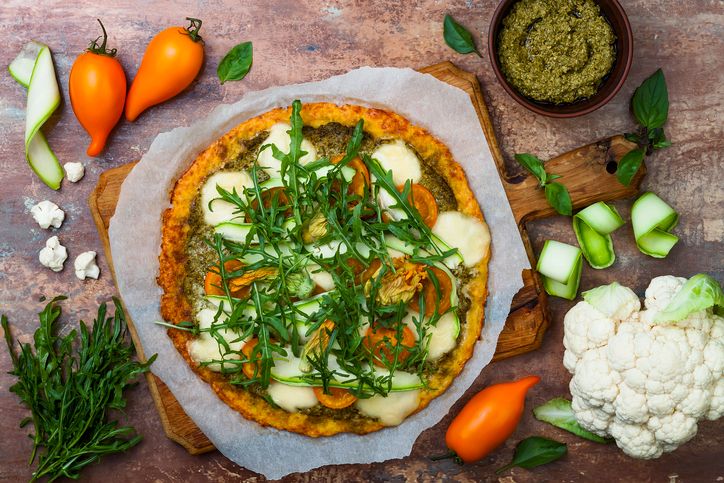
Fewer starches, more whole ingredients
Many store-bought gluten free pizza crusts rely on refined flours like white rice flour, corn starch, or potato flour. While these crusts are free from gluten containing grains, they’re still processed foods and often include gums, flavor enhancers, or even hidden gluten if not certified gluten free. Swapping them for a cauliflower base reduces overall starch, adds real vegetables to your meal, and helps support a more nutritious gluten free diet.
Cauliflower is naturally gluten free, low in carbs, and packed with vitamin C, fiber, and antioxidants. It's a great option for people with celiac disease or gluten intolerance who want to cut back on packaged gluten free foods while keeping meals satisfying.
A better base with fewer risks
To avoid cross contaminated gluten free options, make your crust at home using fresh cauliflower, eggs, and cheese. This helps ensure your crust doesn’t contain hidden gluten from added flavorings or wheat based ingredients. You can also season it with herbs for added flavor without relying on processed sauces or toppings.
Store-bought pizza often contains gluten containing ingredients in toppings or sauces, so creating your own cauliflower base at home lets you stay in full control—keeping your meal gluten free and aligned with your health goals.
Lower carbs, higher nutrients
Many gluten free flour blends use high-starch ingredients like tapioca starch, potato flour, or corn starch. While these flours avoid gluten containing grains, they often lack fiber, protein, and healthy fats. They can also be cross contaminated if not certified gluten free. Swapping them for almond flour gives you a naturally gluten free alternative that’s rich in nutrients and supports more balanced baking.
Almond flour is made from ground almonds and is free from wheat gluten, barley malt, and other gluten containing ingredients. It’s a better choice for people with celiac disease, gluten intolerance, or non celiac gluten sensitivity who want to avoid heavily processed gluten free options.
Better texture with real ingredients
Almond flour adds a soft, moist texture to baked goods and provides vitamin E, magnesium, and plant-based protein. These nutrients are often missing from standard gluten free flours. You can use it in muffins, cookies, or savory recipes like crusts or coatings—without relying on refined gluten free flour blends that contain additives or preservatives.
To make recipes work with almond flour, you may need to adjust moisture or add binding agents like eggs or xanthan gum. The result is a baked product that’s not only gluten free but also better for your overall health.

Swap Packaged Gluten Free Snacks for Homemade Trail Mix
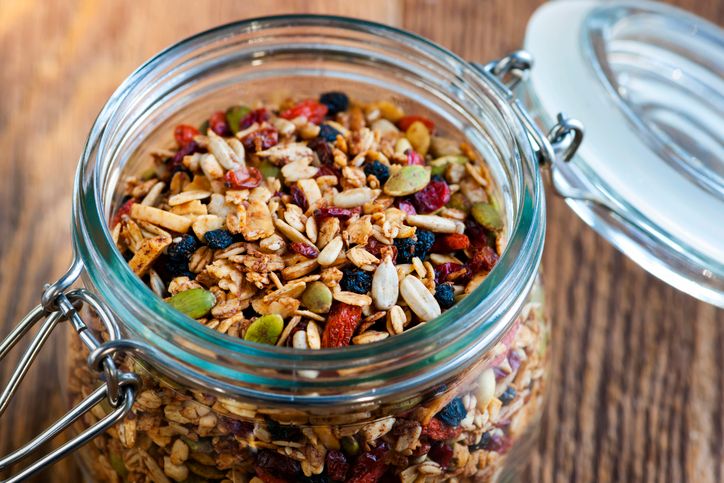
Fewer additives, more control over ingredients
Packaged gluten free snacks might avoid gluten containing grains, but many are still processed foods with added sugars, flavor enhancers, and preservatives. Some may also include ingredients like barley malt, malt vinegar, or wheat based ingredients not always clearly labeled. For people with gluten intolerance or celiac disease, creating your own trail mix is a safer and more nutritious option.
Homemade trail mix using naturally gluten free seeds, nuts, and dried fruit helps you avoid cross contaminated snacks and gives you control over portion size. You can use certified gluten free ingredients to ensure everything you eat is safe and supports your dietary needs.
Build a gluten free mix that satisfies
Choose gluten free seeds like pumpkin or sunflower, and combine them with almonds, pistachios, or walnuts for protein and healthy fats. Add gluten free fruits like dried cranberries, raisins, or even dried coconut for natural sweetness. This snack offers fiber, antioxidants, and steady energy without relying on high-carb gluten free versions of traditional snacks.
Pre-portion your mix into containers or small bags to make it easy to carry and harder to overeat. It’s a simple way to eat foods that are both naturally gluten free and better for your weight loss goals.
Book Now to Experience
S6 Body Sculpting Treatment
1 Minute Self-Registration
Date should not be before minimal date

Swap Store-Bought Gluten Free Dips for Greek Yogurt-Based Spreads

Fewer processed thickeners, more protein
Many store-bought gluten free dips may seem safe, but they often contain stabilizers, gums, and flavor enhancers. Some may even include hidden gluten through ingredients like malt extract or wheat based thickeners if they’re not certified gluten free. Swapping these dips for spreads made from plain Greek yogurt gives you a more natural, protein-rich option that supports a healthier gluten free diet.
Greek yogurt is naturally gluten free and offers a smooth texture that works well with herbs, lemon, or garlic to make a satisfying spread. It's a better choice for people with gluten intolerance, non celiac gluten sensitivity, or celiac disease who want to avoid processed gluten free foods with unclear labels.
Easy to customize for gluten free meals
You can mix Greek yogurt with gluten free spices, vegetables, or gluten free fruits like cucumber or avocado to create dips and spreads that fit any meal. Pair them with fresh vegetables, certified gluten free seed crackers, or gluten free chips made from root vegetables.
Making your own spreads also helps avoid cross contamination, which is a risk with many pre-packaged dips. It’s a clean, simple way to reduce your intake of processed foods while still enjoying flavor and texture.

Boost Fat Loss Results with S6 Body Sculpting Treatment
Support your gluten free diet with targeted fat reduction
Eating gluten free foods can support better digestion, reduce bloating, and help with weight loss—especially for people with celiac disease, non celiac gluten sensitivity, or gluten intolerance. But even with a healthy gluten free diet built around naturally gluten free grains, gluten free fruits, vegetables, and high-protein foods, certain body parts may still hold onto stubborn fat. That’s where the S6 Body Sculpting Treatment can make a difference.
S6 is a non-invasive treatment designed to reduce fat in hard-to-target areas like the belly, waist, thighs, and arms. It works by using a low-energy bio-laser that penetrates subcutaneous fat layers, breaking down fat cells and promoting lymphatic drainage. This is combined with vacuum suction massage to boost circulation and speed up your body’s natural metabolism.
How it works
The treatment begins with a full body shape analysis to customize your session. The aesthetic therapist will then apply the S6 probe to the selected area. The bio-laser stimulates fat breakdown while encouraging collagen production, which helps tighten the skin. This means you can reduce fat without ending up with loose or sagging skin—something that can happen during weight loss from dietary changes alone.
A safe, non-surgical solution
S6 Body Sculpting Treatment requires no injections, surgery, or medication. It’s suitable for people of different body types and is generally safe with no downtime. Most people can go back to work or daily activities immediately after each session. For those following a gluten free diet and seeing progress in weight or bloating reduction, S6 provides an extra boost to help define body contours and eliminate resistant fat pockets more efficiently.
Combining a clean gluten free diet with this targeted treatment supports both internal and external progress. While gluten free options help manage symptoms and improve energy, S6 focuses on refining shape and improving skin firmness in areas that diet alone might not fully transform.
Book your S6 Body Sculpting Treatment today and enhance the results of your gluten free lifestyle.
New Beauty's S6 Body Sculpting TreatmentBook Now to Experience
S6 Body Sculpting Treatment
1 Minute Self-Registration
Date should not be before minimal date
FAQ
1. Can a gluten free diet help reduce belly fat?
A gluten free diet can reduce bloating and water retention, especially in people with gluten intolerance or celiac disease, which may make the belly appear slimmer. However, it won’t automatically burn fat in specific areas like the belly or thighs. If you’re looking to target stubborn belly fat more directly, combining a gluten free diet with treatments like S6 Body Sculpting—which targets subcutaneous fat—can help you see more noticeable results.
2. Are all gluten free foods good for weight loss?
Not necessarily. While many gluten free foods are made without gluten containing ingredients, some are still highly processed and high in starch or sugar. Products like gluten free bread, gluten free crackers, or gluten free cereals can be low in fiber and high in calories. For better weight control, focus on naturally gluten free foods like fruits and vegetables, fresh fish, gluten free seeds, and gluten free beverages with no added sugar.
3. What are the best naturally gluten free grains for weight management?
Some of the best naturally gluten free grains for weight loss include quinoa, wild rice, millet, and buckwheat. These grains are high in fiber and nutrients, helping you stay full longer without relying on processed gluten free options. Avoid overconsuming starch-heavy grains like white rice or those made into gluten free flours with little nutritional value.
4. Can I combine S6 Body Sculpting Treatment with a gluten free diet for better results?
Yes. A gluten free diet that focuses on whole, nutritious foods supports gut health and overall wellness, which can enhance the results of body contouring treatments like S6. By avoiding processed foods and eating gluten free meals with enough fiber, protein, and hydration, you may support better fat metabolism and skin health during the treatment period.
5. What ingredients should I avoid when choosing gluten free snacks?
Even products labeled gluten free can sometimes contain hidden gluten or be made in facilities with a risk of cross contamination. Watch out for ingredients like malt extract, wheat starch, soy sauce, and barley malt. Also avoid highly processed snacks with flavor enhancers or excessive sweeteners. Choose certified gluten free snacks with minimal ingredients or make your own using gluten free seed mixes or fresh produce.
Recommended Articles
COPYRIGHT© NEW BEAUTY MANAGEMENT LIMITED 2025. ALL RIGHT RESERVED.


